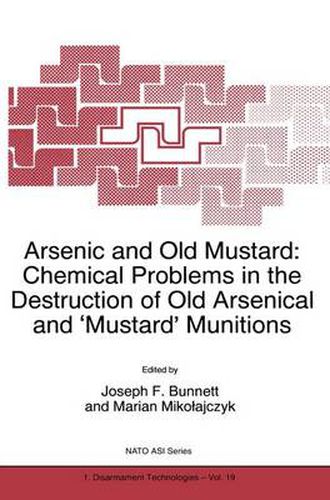Readings Newsletter
Become a Readings Member to make your shopping experience even easier.
Sign in or sign up for free!
You’re not far away from qualifying for FREE standard shipping within Australia
You’ve qualified for FREE standard shipping within Australia
The cart is loading…






This title is printed to order. This book may have been self-published. If so, we cannot guarantee the quality of the content. In the main most books will have gone through the editing process however some may not. We therefore suggest that you be aware of this before ordering this book. If in doubt check either the author or publisher’s details as we are unable to accept any returns unless they are faulty. Please contact us if you have any questions.
More than ten million “poison gas’ shells, mortar bombs, etc., lie hidden in Europe, many of them relics from World War I. Some were fired and failed to detonate, others were abandoned in old ammunition dumps. Most retain their load of chemical warfare (CW) agents. They are turned up daily in the course of farming and construction. Many European nations have permanent departments concerned with their collection and destruction.
Old munitions, when discovered, are usually heavily corroded and difficult to identify. Is it a CW munition? Or an explosive? If CW, what agent does it contain? Once identified, one has to select a destruction method. Some of the methods that have been proposed are less than perfect, and are often complicated by the presence of extraneous chemicals, either mixed with the CW agents during manufacture or formed over decades in the ground.
Of particular interest are the insiders’ reports on the German CW programmes of both World Wars, and the current status of Russian chemical armaments.
$9.00 standard shipping within Australia
FREE standard shipping within Australia for orders over $100.00
Express & International shipping calculated at checkout
This title is printed to order. This book may have been self-published. If so, we cannot guarantee the quality of the content. In the main most books will have gone through the editing process however some may not. We therefore suggest that you be aware of this before ordering this book. If in doubt check either the author or publisher’s details as we are unable to accept any returns unless they are faulty. Please contact us if you have any questions.
More than ten million “poison gas’ shells, mortar bombs, etc., lie hidden in Europe, many of them relics from World War I. Some were fired and failed to detonate, others were abandoned in old ammunition dumps. Most retain their load of chemical warfare (CW) agents. They are turned up daily in the course of farming and construction. Many European nations have permanent departments concerned with their collection and destruction.
Old munitions, when discovered, are usually heavily corroded and difficult to identify. Is it a CW munition? Or an explosive? If CW, what agent does it contain? Once identified, one has to select a destruction method. Some of the methods that have been proposed are less than perfect, and are often complicated by the presence of extraneous chemicals, either mixed with the CW agents during manufacture or formed over decades in the ground.
Of particular interest are the insiders’ reports on the German CW programmes of both World Wars, and the current status of Russian chemical armaments.